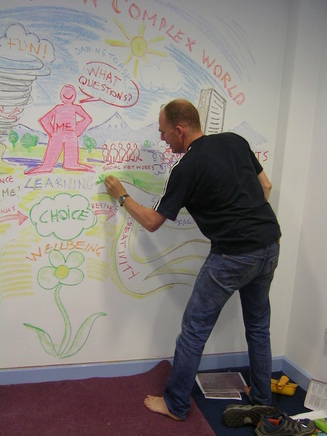
In a design brief for some training and development I'm doing I was asked to address the idea of 'mediums for creative self-expression'. In spite of having invested a lot of time thinking about creativity over the last 15 years I have never really sat down and thought much about the mediums I use. I have taken them for granted.
The context in which people work, study, play and socialise includes the media through which they communicate and are able to express themselves through what they do and how they do it. The medium is an agency or means of doing and accomplishing something. In the context of personal creativity it is the means by which we convert imagination and ideas into something tangible and visible.
According to Ken Robinson the medium rather than the context is the vehicle for creative self-expression. 'If you’re doing something creative, you have to be working in a medium. My experience is that the most creative people love the medium that they work in. Musicians love the sounds they make. Writers love words. Mathematicians love the abstractions that numbers make possible. Engineers and architects love building things' (Robinson 2007).
The context in which people work, study, play and socialise includes the media through which they communicate and are able to express themselves through what they do and how they do it. The medium is an agency or means of doing and accomplishing something. In the context of personal creativity it is the means by which we convert imagination and ideas into something tangible and visible.
According to Ken Robinson the medium rather than the context is the vehicle for creative self-expression. 'If you’re doing something creative, you have to be working in a medium. My experience is that the most creative people love the medium that they work in. Musicians love the sounds they make. Writers love words. Mathematicians love the abstractions that numbers make possible. Engineers and architects love building things' (Robinson 2007).
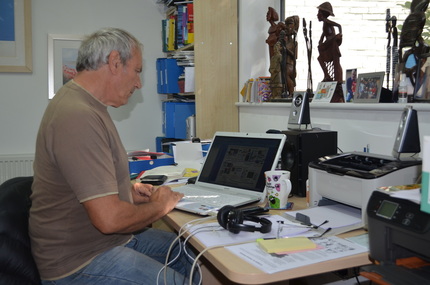
For an artist the medium is his art - his drawing, painting or other form of expression and it includes the media he uses to create his representations, his sketchbook and tools for sketching and colouring. Or, if he is a digital artist - a computer or digitising pad, scanner and camera or smartphone and software to process and manipulate the images. For a writer his medium for self-expression is the words he writes be they in a notebook or on a word processor. For a performer like a footballer, his medium is the game of football he plays and his tools are the ball and the boots he wares.
Finding the medium and media for creative self-expression is an important and continuous search across and through all the spaces and opportunities in our life if we want to find joy and live a fulfilled and meaningful life. Looking back through my life as a teenager I loved drawing and painting so I was used to the medium of the artist. Later I swapped my sketchpad for a field notebook as I became a geologist. My context became the 'field' and my medium my field sketches and the maps I produced as I observed and interpreted the world around me. Geological mapping is a craft that combines observation and critical thinking with imagination. In the classroom as a teacher, the lecture or practical became my medium and the resources I produced and used were my tools to engage and encourage students to share my love of my subject. These techniques were later adapted for educational professionals as I morphed into a higher education researcher, policy maker and developer. In this way, although the contexts have changed the medium through which I have expressed myself have generally remained constant. Outside my work I have enjoyed expressing myself through my garden and being in a band where I play drums. All these contexts, and more, provided me with challenges and opportunities, in which I could create a sense of purpose. Within them I found a 'medium', the means of doing and accomplishing something that I valued and within which I could create something - mostly by myself, but sometimes with others.
The medium I prefer to express my ideas, imagination, beliefs and values in is writing. This has always been the way since I wrote my dissertation as an undergraduate, through the papers and thesis I wrote as a postgraduate, through the articles and books I have published in my fields of geology and education and now to the articles and blogs I write and most recently a book about my family's history.
In recent years I have come to see myself as first and foremost a writer, then a developer, broker and lots of other things. Some would say I'm sad spending so much time sitting at a computer writing. My wife sees my writing as work, and there is a discipline that makes it work-like, but it often feels more like a hobby because of the pleasure and satisfaction I gain from it. Through writing I explore my ideas and imagination and bring some sort or order and meaning to their randomness as they are connected and contextualised.
There are many definitions of creativity but as a writer I have always had a soft spot for Dellas and Gaier (1970) who suggest that creativity is the desire and ability to use imagination, insight, intellect, feeling and emotion to move an idea from one state to an alternative, previously unexplored state. That sums up very nicely what often happens when I sit down to write about a subject I know little about - like this blog. The process of crystallising thoughts in words is the way I discover and consolidate what I understand and believe. 'How do I know what I know until I say it?' is very real to me. Through writing I appropriate the ideas of others and make them my own connecting them to what I understand and adding to my understanding in the process. It's mostly a solo experience - so in answer to the question do you prefer to be creative on your own or with others, I would have to say that on balance, and in the context of my preferred medium, my preference is to work by myself. Although, there are certainly times when it is a joy to write something collaboratively.
The desire to write is often what gets me up early in the morning (including this blog today). I have a thought in my head and that provides the stimulation and motivation and I get annoyed if something gets in the way. It's the medium that provides me with the means of doing something useful (to me) with the idea. When I sit down to write I usually have a bit of an idea about what I want to write about but not much. The words have to be invented as I write. When I get stuck I might google and do thanks to serendipity I will usually find something that someone has written that triggers new thoughts and ideas. I sometimes also bounce an idea off friends who will offer their perspectives. For example yesterday I wanted to start writing something on the creative affordances of social media but didn't know where to start. So I wrote down some simple propositions and emailed them to a couple of knowledgeable friends and within an hour or so I had their perspectives, as well as confirmation that what I had written was okay. This enabled me to progress my understanding in a way that was useful to me.
The medium enables immersion. By that I mean I can lose myself in the process for hours, sometimes 10 or 12 hours in a day. It's not all fun though and there are often negative emotions and feelings of dissatisfaction as I struggle with something or lose something that wasn't saved, as well as more positive feelings as stuff emerges. Writing is a process that results in a product but the product emerges through the process and that is where the magic lies. So at the end of writing this piece the collection of connected thoughts and feelings that have been crystallised into words did not exist before.
I enjoy writing for different audiences and in different styles - essays, academic articles and books, magazine articles and blogs to name a few. The space I write in is not so important - I can write anywhere and anytime but I prefer writing in my own space,which is my office - a converted garage where I'm surrounded by own things and connected to the world via internet. This perhaps is because leaving the house and walking to the garage is like going to work where I know I am going to be disciplined. My office space is my equivalent to an artist's studio. It's full of stuff that has meaning in my life. Like many an artist's studio my office is quite messy but I can generally find things I need. I remember reading that when they broke into artist Francis Bacon's studio after he died it was knee deep in discarded drawings and paintings. In life he reasoned that in this environment he created order out of chaos and I have used that as an excuse for my messyness ever since.
My preferred writing tool is a laptop/word processor - I use an old version of word. I cannot touch type but I'm quite fast with 2 or 3 fingers and I type as fast as I can think and compose. I sometimes write with pencil and paper but I notice that when I sit down at my laptop I ignore what I have written and just write. But coming to it freshly, after having thought about it, generally makes it easier. Writing is an emotional rather than clinical affair: I often listen to music when I write and I choose music that fits my mood.
The second medium I am at home with is visual representation. I like to turn ideas that are written in words into pictures - illustrations and diagrams, in particular. I enjoy the process of creating a picture in my mind but technically, I am not very good at drawing the pictures so I work with an illustrator (Kiboko our community artist) to help me turn my imagination into reality. Sometimes I just tell him that I want to illustrate an idea and describe it to him in words and then let him interpret but this generally does not work. I have discovered that if I can create a design for him - usually based on cut and paste of figures he has already produced we get a much better result. To achieve this I've got proficient in using paint and photoshop to edit and amend existing illustrations or parts of illustrations. - Here is a recent example formed around the idea of learning and developing in lots of different contexts. On the left is my collage formed from previous drawings that Kiboko has done with my notes to guide him and on the right the new design created by Kiboko. The process is collaborative and we both feel that we have contributed to the process of creation.
Finding the medium and media for creative self-expression is an important and continuous search across and through all the spaces and opportunities in our life if we want to find joy and live a fulfilled and meaningful life. Looking back through my life as a teenager I loved drawing and painting so I was used to the medium of the artist. Later I swapped my sketchpad for a field notebook as I became a geologist. My context became the 'field' and my medium my field sketches and the maps I produced as I observed and interpreted the world around me. Geological mapping is a craft that combines observation and critical thinking with imagination. In the classroom as a teacher, the lecture or practical became my medium and the resources I produced and used were my tools to engage and encourage students to share my love of my subject. These techniques were later adapted for educational professionals as I morphed into a higher education researcher, policy maker and developer. In this way, although the contexts have changed the medium through which I have expressed myself have generally remained constant. Outside my work I have enjoyed expressing myself through my garden and being in a band where I play drums. All these contexts, and more, provided me with challenges and opportunities, in which I could create a sense of purpose. Within them I found a 'medium', the means of doing and accomplishing something that I valued and within which I could create something - mostly by myself, but sometimes with others.
The medium I prefer to express my ideas, imagination, beliefs and values in is writing. This has always been the way since I wrote my dissertation as an undergraduate, through the papers and thesis I wrote as a postgraduate, through the articles and books I have published in my fields of geology and education and now to the articles and blogs I write and most recently a book about my family's history.
In recent years I have come to see myself as first and foremost a writer, then a developer, broker and lots of other things. Some would say I'm sad spending so much time sitting at a computer writing. My wife sees my writing as work, and there is a discipline that makes it work-like, but it often feels more like a hobby because of the pleasure and satisfaction I gain from it. Through writing I explore my ideas and imagination and bring some sort or order and meaning to their randomness as they are connected and contextualised.
There are many definitions of creativity but as a writer I have always had a soft spot for Dellas and Gaier (1970) who suggest that creativity is the desire and ability to use imagination, insight, intellect, feeling and emotion to move an idea from one state to an alternative, previously unexplored state. That sums up very nicely what often happens when I sit down to write about a subject I know little about - like this blog. The process of crystallising thoughts in words is the way I discover and consolidate what I understand and believe. 'How do I know what I know until I say it?' is very real to me. Through writing I appropriate the ideas of others and make them my own connecting them to what I understand and adding to my understanding in the process. It's mostly a solo experience - so in answer to the question do you prefer to be creative on your own or with others, I would have to say that on balance, and in the context of my preferred medium, my preference is to work by myself. Although, there are certainly times when it is a joy to write something collaboratively.
The desire to write is often what gets me up early in the morning (including this blog today). I have a thought in my head and that provides the stimulation and motivation and I get annoyed if something gets in the way. It's the medium that provides me with the means of doing something useful (to me) with the idea. When I sit down to write I usually have a bit of an idea about what I want to write about but not much. The words have to be invented as I write. When I get stuck I might google and do thanks to serendipity I will usually find something that someone has written that triggers new thoughts and ideas. I sometimes also bounce an idea off friends who will offer their perspectives. For example yesterday I wanted to start writing something on the creative affordances of social media but didn't know where to start. So I wrote down some simple propositions and emailed them to a couple of knowledgeable friends and within an hour or so I had their perspectives, as well as confirmation that what I had written was okay. This enabled me to progress my understanding in a way that was useful to me.
The medium enables immersion. By that I mean I can lose myself in the process for hours, sometimes 10 or 12 hours in a day. It's not all fun though and there are often negative emotions and feelings of dissatisfaction as I struggle with something or lose something that wasn't saved, as well as more positive feelings as stuff emerges. Writing is a process that results in a product but the product emerges through the process and that is where the magic lies. So at the end of writing this piece the collection of connected thoughts and feelings that have been crystallised into words did not exist before.
I enjoy writing for different audiences and in different styles - essays, academic articles and books, magazine articles and blogs to name a few. The space I write in is not so important - I can write anywhere and anytime but I prefer writing in my own space,which is my office - a converted garage where I'm surrounded by own things and connected to the world via internet. This perhaps is because leaving the house and walking to the garage is like going to work where I know I am going to be disciplined. My office space is my equivalent to an artist's studio. It's full of stuff that has meaning in my life. Like many an artist's studio my office is quite messy but I can generally find things I need. I remember reading that when they broke into artist Francis Bacon's studio after he died it was knee deep in discarded drawings and paintings. In life he reasoned that in this environment he created order out of chaos and I have used that as an excuse for my messyness ever since.
My preferred writing tool is a laptop/word processor - I use an old version of word. I cannot touch type but I'm quite fast with 2 or 3 fingers and I type as fast as I can think and compose. I sometimes write with pencil and paper but I notice that when I sit down at my laptop I ignore what I have written and just write. But coming to it freshly, after having thought about it, generally makes it easier. Writing is an emotional rather than clinical affair: I often listen to music when I write and I choose music that fits my mood.
The second medium I am at home with is visual representation. I like to turn ideas that are written in words into pictures - illustrations and diagrams, in particular. I enjoy the process of creating a picture in my mind but technically, I am not very good at drawing the pictures so I work with an illustrator (Kiboko our community artist) to help me turn my imagination into reality. Sometimes I just tell him that I want to illustrate an idea and describe it to him in words and then let him interpret but this generally does not work. I have discovered that if I can create a design for him - usually based on cut and paste of figures he has already produced we get a much better result. To achieve this I've got proficient in using paint and photoshop to edit and amend existing illustrations or parts of illustrations. - Here is a recent example formed around the idea of learning and developing in lots of different contexts. On the left is my collage formed from previous drawings that Kiboko has done with my notes to guide him and on the right the new design created by Kiboko. The process is collaborative and we both feel that we have contributed to the process of creation.
Most recently, I have, thanks to Web 2.0 website building tools enjoyed creating websites in order to support my work as a developer and organiser of social networks around the educational ideas I believe in. Weebly, (this website) and other Web 2.0 tools like explee that allows you to animate illustrations, have opened up a whole new medium within which I can think, communicate and create. Thanks to Web 2.0 and social media the world has suddenly become richer for people to express themselves and share their creations.
Please share your perspectives on the medium(s) you use for creative expression?
Sources
Photo is of Julian Stodd a talented graphic facilitator drawing a conversation on the walls of SCEPTrE at the University of Surrey
Dellas, M. and Gaier, E.L. (1970) Identification of creativity in the individual. Psychological Bulletin, 73, 55-73
Robinson, K. (2007) Fresh Perspective: Creativity and Leadership: Sir Ken Robinson in Conversation with Russ Volckmann Available on line: http://integralleadershipreview.com/ 5377-fresh-perspective-creativity-and-leadership-sir-ken-robinson-in-conversation-with-russ-volckmann/
Norman Jackson
Please share your perspectives on the medium(s) you use for creative expression?
Sources
Photo is of Julian Stodd a talented graphic facilitator drawing a conversation on the walls of SCEPTrE at the University of Surrey
Dellas, M. and Gaier, E.L. (1970) Identification of creativity in the individual. Psychological Bulletin, 73, 55-73
Robinson, K. (2007) Fresh Perspective: Creativity and Leadership: Sir Ken Robinson in Conversation with Russ Volckmann Available on line: http://integralleadershipreview.com/ 5377-fresh-perspective-creativity-and-leadership-sir-ken-robinson-in-conversation-with-russ-volckmann/
Norman Jackson
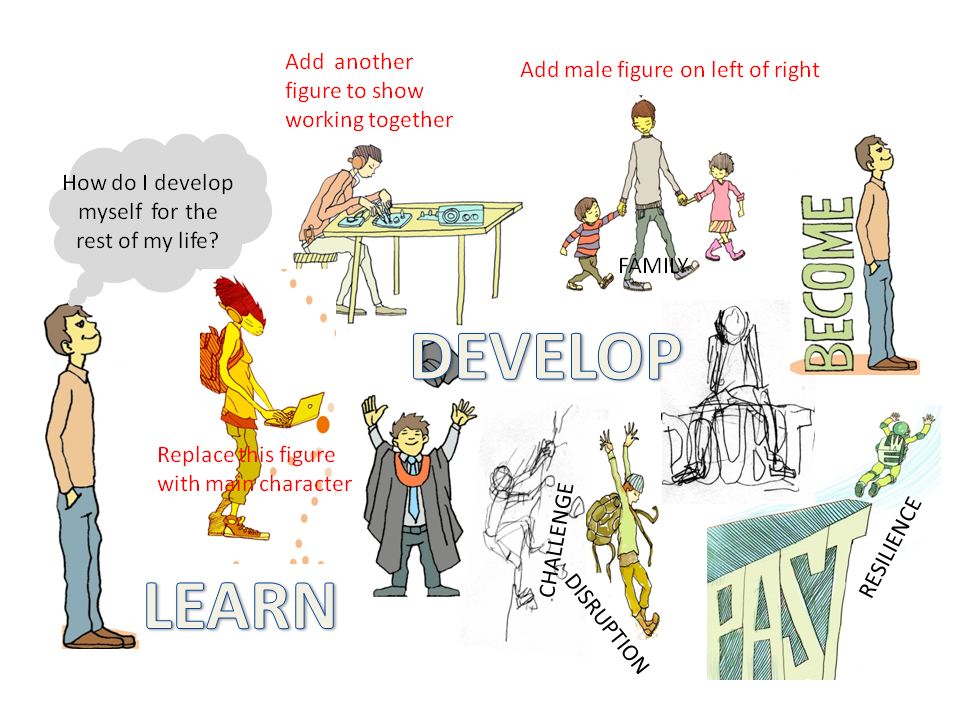
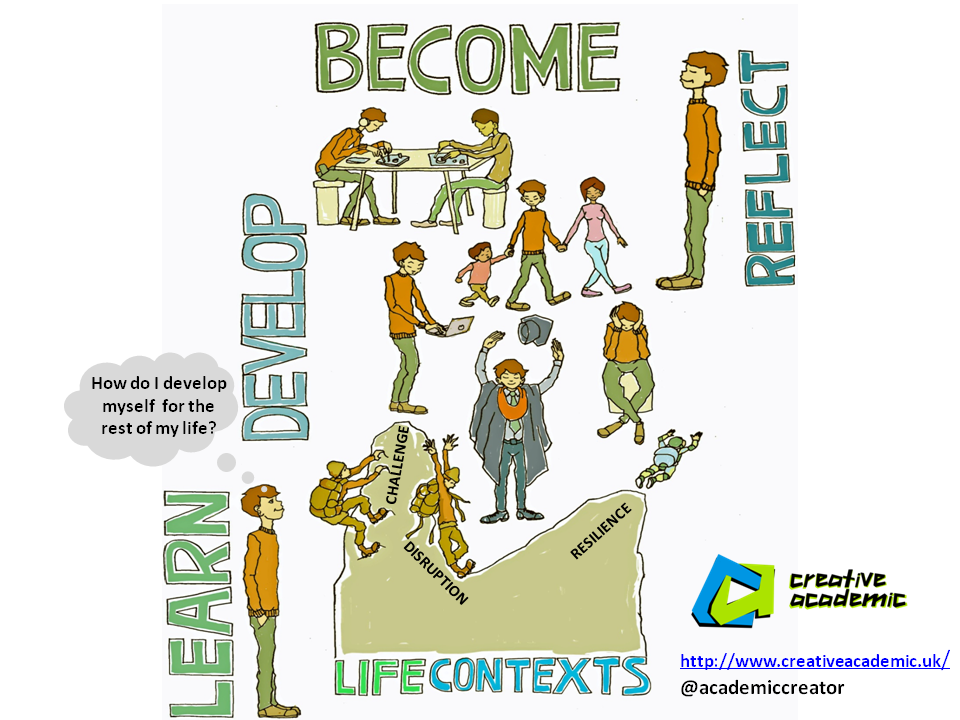
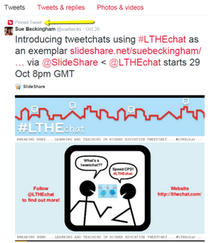
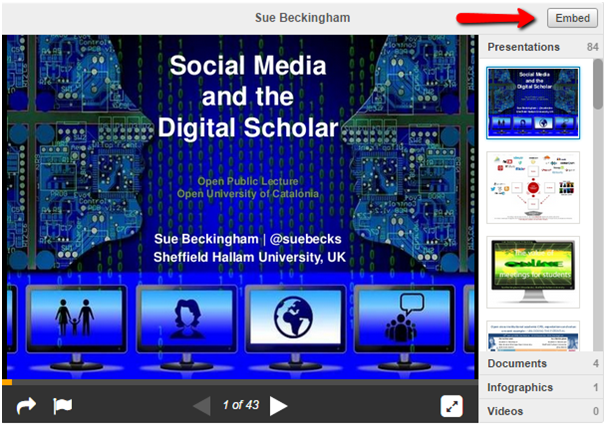
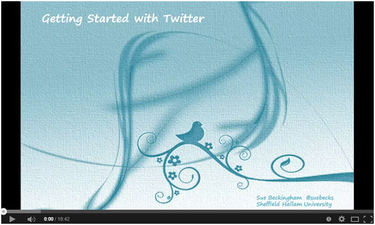
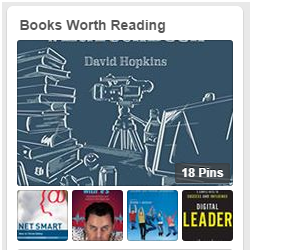
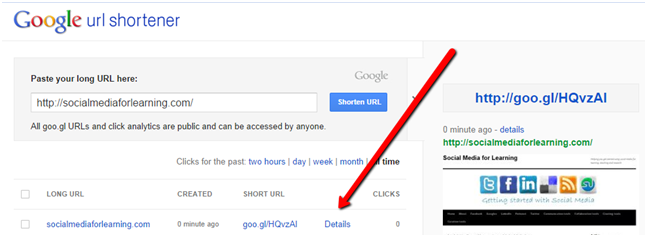
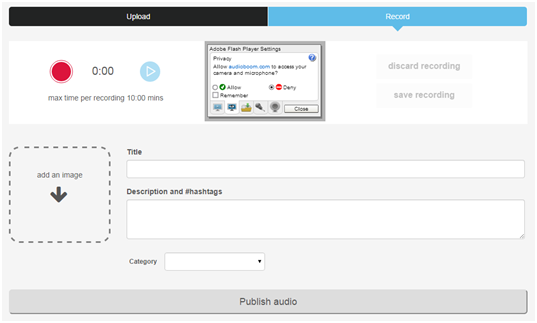

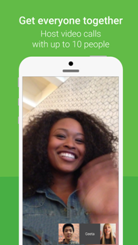

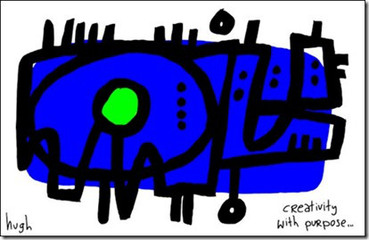
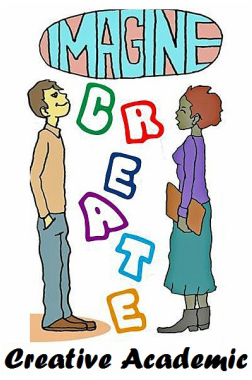
 RSS Feed
RSS Feed
